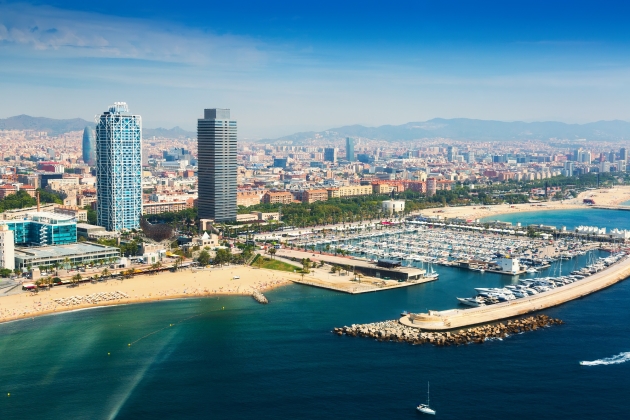


The bioregeneration reefs will be located between the Dic de Recer breakwater and the submerged breakwaters next to it, and they will help sea fans, groupers, sponges, octopuses, and other marine species to thrive
The project will be carried out in early 2023 and will take 7 months
This measure is part of the process to transform the Olympic Port, partly in order to boost marine biodiversity in the area, a task being tackled in collaboration with Barcelona Zoo
The Olympic Port is taking another step towards renaturalising the Barcelona coast by installing 100 biotopes in the form of bioregeneration reefs that will create underwater habitats and increase the area’s biodiversity. This measure was announced this morning, coinciding with the opening of the stand that the Olympic Port will have until next Sunday at the Barcelona International Boat Show.
The reef initiative comes after 2,000 concrete blocks were installed in the summer of 2021 to line the Dic de Recer breakwater and protect the Olympic Port from the effects of storms. Of these, 300 were naturalised to encourage biological diversity in our sea.
These two actions are part of the Olympic Port transformation being carried out by Barcelona de Serveis Municipals (B:SM) and commissioned by Barcelona City Council. One of the goals of the process is to boost biodiversity in the area, in collaboration with Barcelona Zoo.
According to First Deputy Mayor and Chair of B:SM Jaume Collboni, this new phase of the project demonstrates the Olympic Port’s solid commitment to marine ecosystem preservation. ‘A little over a year ago, we made the most of reinforcing the port infrastructure to start a project that would help to improve the seabed off our coast. This project is another step towards the Olympic Port we want: a lively, dynamic space committed to sea-related economic activity that also raises city residents’ awareness of the need to preserve the marine environment’.
The biotopes, approximately 1 m high and 2 m wide, will be installed underwater between the Dic de Recer breakwater and the submerged breakwaters just in front of it. A total of 100 breakwaters will be spread out in 6 groups to form a large bioregeneration reef with more than 1,300 m2 of surface area. These structures, made from prefabricated concrete pieces, will be attached to the seabed through an anchoring system, with the help of a team of divers.
The process to install this large bioregeneration reef will begin in early 2023 and will take 7 months to complete. It is designed to be full of cavities where marine species like sea fans, groupers, congers, morays, sponges, octopuses, and spiny lobsters can thrive. The project will cost €98,000.

